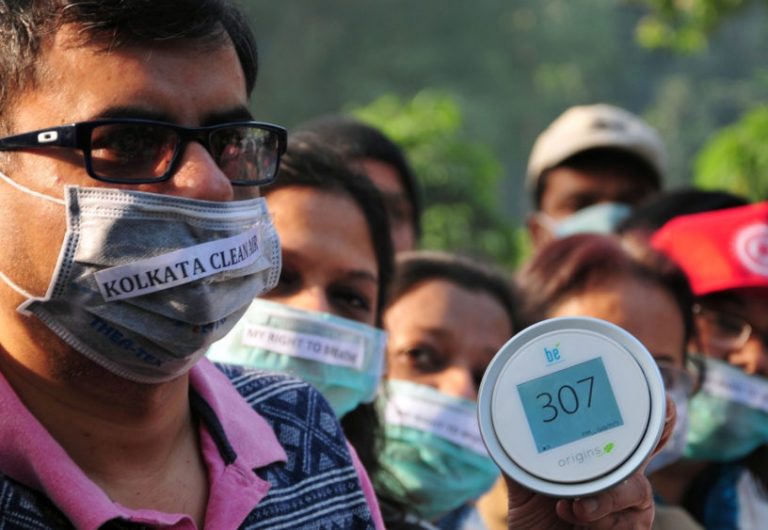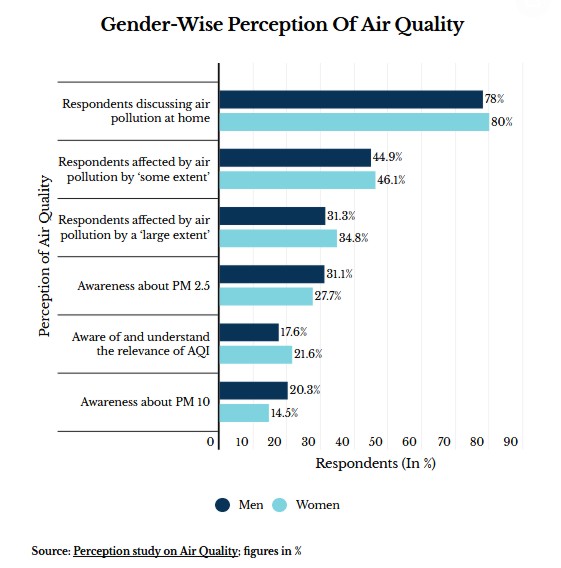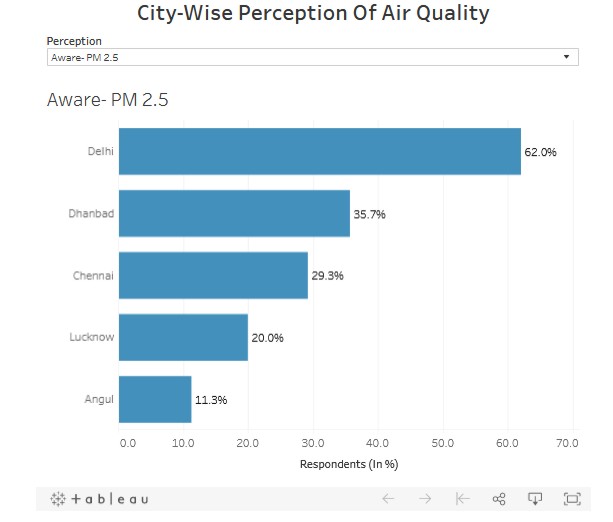Mumbai: Almost 80% of Indians polled across 17 cities believe that air pollution affects their quality of life, and 32% reported an effect on lifestyles, according to a new study.

Kolkata: People wearing masks participate in an awareness rally on pollution.
While 93% believe that air pollution has a negative impact on health, 80% feel sick when the air quality in their city worsens, the study, Perception Study on Air Quality, commissioned by The Clean Air Collective, a network of more than 80 civil society organisations, citizen groups and experts working on the issue of air pollution and conducted by CMSR Consultants, a research group, across 17 cities and 5,000 respondents, found.
The study noted that only 13% people always seek information about air quality in their city while 12% never seek such information.
Delhi has the highest number of people (100%) who have heard about air pollution, followed by Chennai, Bengaluru, Pune and Kolkata (all above 98%).
Air pollution has also become a household issue: 78% of people interviewed reportedly discussed air pollution at home on numerous occasions.
India is ranked as one of the world’s most polluted countries, with 14 cities in the top 20 most polluted cities globally, according to the 2018 Global Ambient Air Quality Database of the World Health Organization (WHO).
Rural deaths, life expectancy and air pollution: The Indian equation
In 2016, 195 deaths per 100,000 people in India were attributed to air pollution, just behind Afghanistan (406) and Pakistan (207), according to data from the State of Global Air, an initiative of independent population health research centres Health Effect Institute of Global Air and Institute of Health Metrics and Evaluation.
Kanpur had the world’s worst fine particulate matter (PM 2.5)–known to pose the greatest threat to human health, these are particles smaller than 2.5 micrometres, or roughly 1/30th the thickness of the human hair–of 173 micrograms per cubic metre of air (μg/m3 annual mean), which is 17 times the WHO’s annual mean of 10 µg/m³ and three times more than the national ambient air quality annual mean of 40 µg/m³, IndiaSpend reported on May 2, 2018.
High levels of PM 2.5 have reduced life expectancy of Indians by up to nine years relative to what it would be if the WHO-prescribed 24-hour safe level of PM 2.5 (25 µg/m3) was met, according to 2016 Air Quality Life Index by the University of Chicago.
The poorest and the marginalised appear to bear the brunt of air pollution. In 2015, about 75% of deaths linked to air pollution in India, some 1.1 million people, were in rural areas, Vox reported on October 31, 2018.
Two-thirds of the Indian population is rural with 80% households operating on biomass like wood and dung for cooking and heating, which together contribute to 25% of outdoor pollution in India.
Indoor air pollution caused 66,800 deaths of under-five children in India in 2016, 10% more than 60,900 deaths of under-five children caused by outdoor air pollution in the same year, IndiaSpend reported on October 29, 2018.
The affected know the least
The survey shows large disparity in awareness of air pollution and basic terminologies like PM 2.5, PM 10 and air quality index (AQI).
While more women (80%) than men (78%) discuss air pollution at home, awareness of technical terms, such as PM 2.5 and PM 10, was lower among women, 27.7% and 14.5%, respectively, compared to men (31.1% and 20.3%).
More women are aware of AQI (21.6%) than men (17.6%), but they don’t understand its importance.
More women (34.8%) felt that air pollution affected them to a “large extent” and to “some extent” (46.1%), compared to 31.3% and 44.9%, respectively, for men.

The awareness about technical terms was found to be lowest among respondents of smaller cities, such as Singrauli (12% for PM 2.5 and 6.3% for PM 10) in Madhya Pradesh and Angul (11.3% for PM 2.5 and 5.7% for PM 10) in Odisha. Dhanbad (63.7%) in Jharkhand and Raipur (83.3%) in Chhattisgarh had the most number of people who were not aware and did not understand the relevance of AQI.
These were also the regions with the highest proportion of people who regarded the air quality in their city as ‘unhealthy’: 85% in Angul, 64% in Lucknow and 62% in Korba.

Source: Perception study on Air Quality; figures in %
Scope for improvement
The data not only highlight low awareness but also reflect how information is disseminated inadequately, especially among women and in small cities.
The reliance on government websites and AQI boards for information was reported to be 26% and 17%, respectively, as a source of awareness, compared to newspapers (70%) and mobile apps (36%).
While 32% “strongly agreed” that polluting companies needed to be closed, even if it put jobs at risk, more than 50% agreed on the need for laws to control air pollution.
As many as 70% of Indians polled said they had taken steps in their individual capacity to mitigate the impact of bad air quality, and 86% showed interest in knowing more about AQI.

Source: Perception study on Air Quality; figures in %
(Singh, a bachelors student at St. Xavier’s College, Mumbai, is an intern with IndiaSpend.)
Courtesy: India Spend